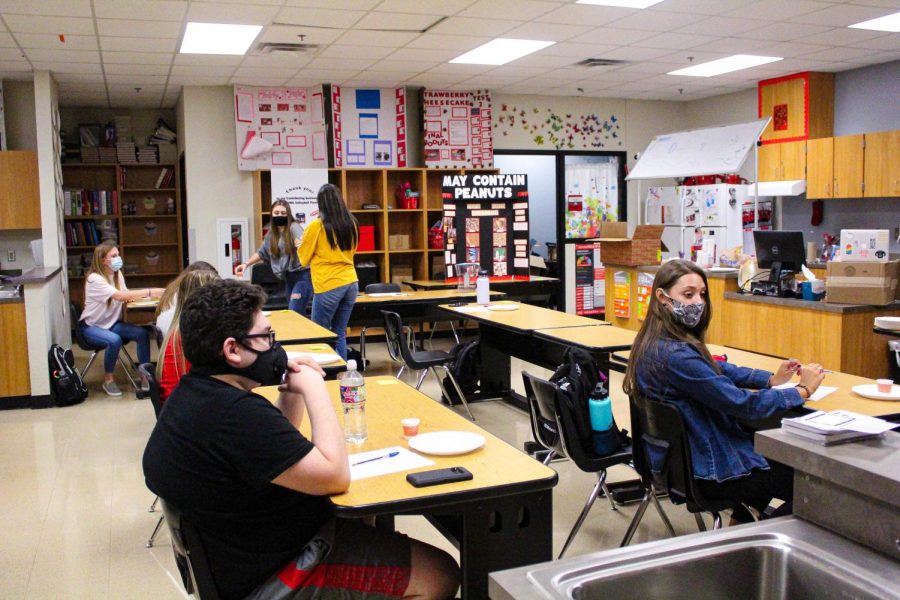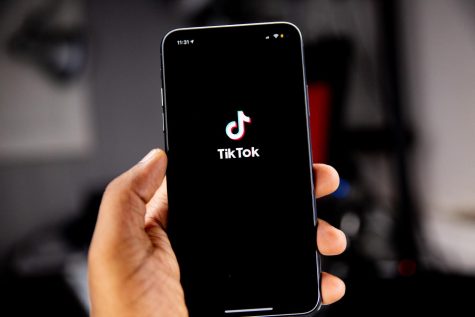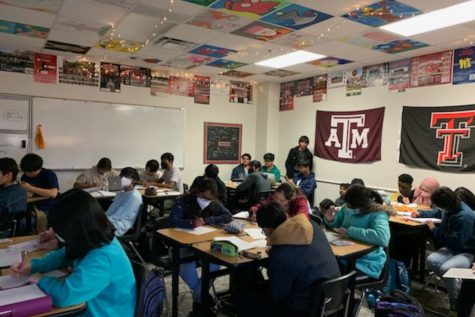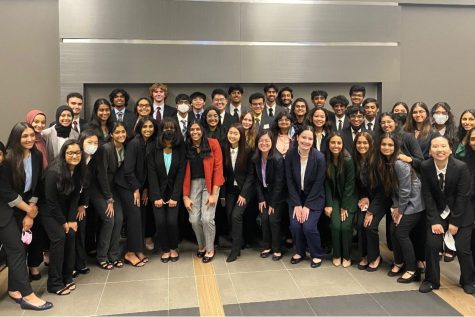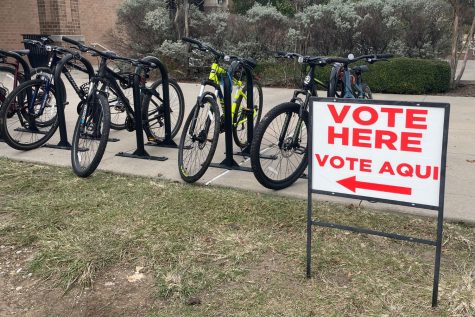On-campus, off-campus COVID-19 cases within nine percent of each other
A CDC study has shown COVID spread in schools is relatively low. The numbers in Frisco ISD appear to support this. As of Friday, the number of on-campus (237) and off-campus (189) active cases are within nine percent of each other.
It was just after spring break in March 2020 when Frisco ISD decided to move to a virtual format in an attempt to minimize the spread of COVID-19. With scientists and medical professionals just beginning to understand the virus, there were concerns about having hundreds if not thousands of students and staff members on a campus.
But a recent study by the CDC has shown COVID spread in schools is relatively low. The numbers in Frisco ISD appear to support this.
As of Friday, the number of on-campus (237) and off-campus (189) active cases are within nine percent of each other.
“This data point does not inform the district a great deal but may help families make determinations about their preferred learning environment,” FISD spokeswoman Meghan Cone said via email. “It simply tells FISD whether or not the person participated in an on-campus activity during the infectious period, which dictates the steps taken by each Campus Close Contact Review Team.”
Of the 5,418 students and staff that have quarantined since Aug. 1 for close contacts to someone with COVID-19, only 1.6 percent have tested positive with no known external exposure outside of school according to FISD Executive Director of Government & Legal Affairs Daniel Stockton in the Jan. 12 board meeting.
“So that’s 86 cases,” Stockton said at the board meeting. “That is an increase, I’ll tell you in December we were at 1.1 percent, so it is an increase, but it’s well below our 2 percent threshold that we consider low.”
The district has a 2 percent threshold that it considers low for the close contact positivity rate and aims to stay below that based on the general incidents of COVID-19 in the community, of which 3.9 percent of the total population of FISD students and staff and 4.5 percent of Collin and Denton counties have tested positive.
The off-campus close contact conversion number has been higher than that of on-campus, according to Stockton, and he attributes this to to off-campus exposures being longer than on-campus ones.
“I spoke with local health authority Dr. Gamber and confirmed this, my primary explanation for that was off-campus exposures tend to be a lot longer than on campus exposures because of the mitigation efforts that we’re taking,” Stockton said. “Exposure at lunch is 30 minutes in school, but a lunch out in the world may be an hour, hour and a half. So, we are keeping that exposure timeframe much lower.”
Senior Joshua George is one of the 189 students who has had an off-campus case.
“I went out with some friends and we caught it,” George said. “We don’t know where it came from but almost everyone who went caught it.”
Initially planning on going to school in person, George decided to stay online.
“I originally wanted to go in person with my friends,” George said. “Once I heard how it was I didn’t really want to go, just cause wearing masks with glasses is really annoying. So when I had an opportunity to change I decided to stay, one for the convenience, and two I was already used to online learning.”
The number of on-campus cases is lower when Pre-K through 2nd grade and sports are removed as nearly 60 percent of the 86 on-campus cases since Jan. 12 are from these two groups.
“When protective measures such as the use of face coverings and social distancing have been in place, there has been very little to no spread occurring in FISD schools,” Cone said. “The spread that has occurred is in settings where masks are not required and social distancing is less feasible, such as in Pre-K-2 classrooms and during athletic activities.”
For some students, these factors are worth the risk, as senior Emily Chladny participates on the girls’ soccer team and decided to do in-person learning because it’s her last year of high school.
“I wanted to be with my friends in my last year,” Chladny said. “As long as I stayed away from people in high risk categories, I wanted to take the risk so I didn’t regret it when I looked back to high school.”
Having had COVID-19 during the summer, she has learned to be more cautious while being at school.
“My sister went on a trip to Austin and she gave it to me when she came home by accident. We were both very unaware at how little the symptoms can be for you to still presume you have COVID,” she said. “It has definitely made me more cautious but I have always been known to be careful about germs. I would never share drinks or stuff like that so it’s mostly just the distance aspect that is hard for me to remember when we both have covered faces.”
For fellow in-person student, junior Brady McNally, where he got COVID-19 isn’t as easily traceable.
“I honestly still have no idea how I got COVID, it was just really out of nowhere,” McNally said. “None of my friends or family had it or got it from me, so it was just really bizarre when I started getting sick.”
According to Cone, Frisco ISD will continue to report and use the data it collects on COVID-19 with aims of mitigating the spread of the virus.
“Frisco ISD has been collecting and monitoring data related to student and staff cases of COVID-19 since the school year began,” she said. “[The district] will continue to monitor our data and will make changes as needed if we experience a significant increase in positive cases due to close contact at school.”
For more information from the district on COVID-19, visit this link, from the city government of Frsico visit this link, from Collin County government, and from the Texas Department of State Health Services, visit this link.
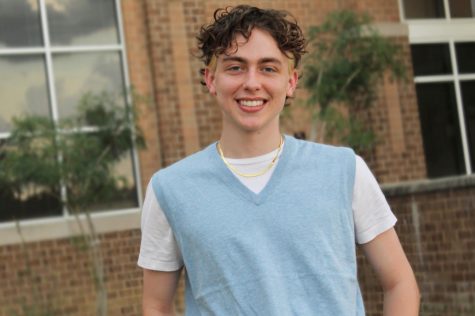
Aaron Boehmer is a senior and in his fourth year of working on the Wingspan staff, third as an editor. Aaron is hoping to study journalism or political...



